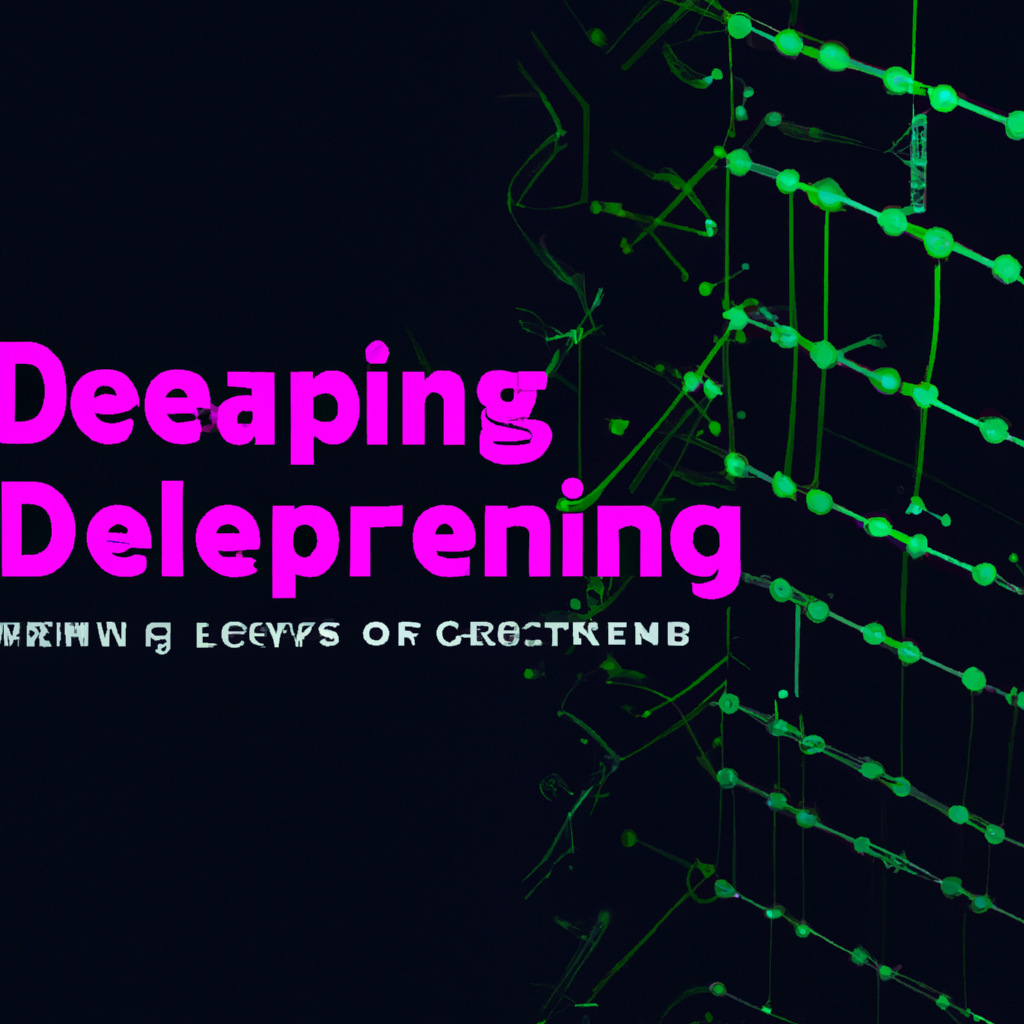Understanding the Principles of Deep Reinforcement Learning in Game Playing
Table of Contents
Understanding the Principles of Deep Reinforcement Learning in Game Playing
# Introduction
In recent years, there has been a surge of interest in the field of deep reinforcement learning (DRL), especially in the context of game playing. Games serve as a valuable testbed for studying complex decision-making processes, and DRL has shown remarkable success in achieving superhuman performance in various game domains. This article aims to delve into the principles underlying DRL in game playing, providing an overview of the classic algorithms as well as the new trends in this exciting field.
Reinforcement Learning Basics Before diving into the specifics of DRL, it is crucial to grasp the fundamental concepts of reinforcement learning (RL). RL is a subfield of machine learning concerned with sequential decision making in an environment. The agent interacts with the environment, taking actions based on its current state, receiving feedback in the form of rewards or penalties. The goal of RL is to learn a policy that maximizes the cumulative reward over time.
Deep Q-Network (DQN) One of the pioneering algorithms in DRL is the Deep Q-Network (DQN), introduced by Mnih et al. in 2013. DQN combines the power of deep neural networks with the Q-learning algorithm, enabling agents to learn directly from raw sensory input, such as pixels in the case of visual games. By approximating the action-value function, DQN can handle high-dimensional state spaces, making it suitable for complex game environments.
Experience Replay A key component of DQN is experience replay, which addresses the problem of correlated data and unstable learning. During interaction with the environment, the agent stores its experiences, including the state, action, reward, and next state, in a replay buffer. Instead of immediately updating the policy based on the most recent experience, DQN samples a mini-batch of experiences from the replay buffer, breaking the temporal correlation and stabilizing the learning process.
Target Network To further enhance the stability of DQN, a target network is introduced. The target network is a separate copy of the neural network used to estimate the action-value function. The weights of the target network are updated periodically, typically less frequently than the online network, to provide a consistent target for the Q-learning update. This decoupling of target estimation from online action selection prevents harmful feedback loops and improves the convergence of DQN.
Double Q-Learning Traditional Q-learning algorithms tend to overestimate action values, leading to suboptimal policies. Double Q-learning, proposed by Hasselt et al. in 2010, addresses this issue by decoupling the selection and evaluation of actions. Instead of relying on a single network to estimate the action values, Double Q-learning maintains two separate networks, one for action selection and another for action evaluation. By decoupling these two steps, Double Q-learning provides a more accurate estimate of the action values.
Dueling DQN Another extension to the DQN framework is the Dueling DQN architecture, introduced by Wang et al. in 2016. Dueling DQN separates the estimation of the state value and the advantages of each action. By doing so, Dueling DQN can better capture the value of each state independently of the chosen action, leading to improved learning efficiency. This architecture has proven particularly effective in games where the value of each action may vary greatly across different states.
Asynchronous Advantage Actor-Critic (A3C) While DQN is a powerful algorithm, it suffers from the limitation of being a single-agent method. In game playing scenarios, it is often beneficial to have multiple agents learn concurrently, exchanging experiences and speeding up the learning process. The Asynchronous Advantage Actor-Critic (A3C) algorithm, proposed by Mnih et al. in 2016, addresses this need by introducing parallelism into the learning process. A3C employs multiple actor-learner threads that explore the environment independently and asynchronously update a shared model. This parallel nature enables A3C to achieve faster convergence and increased sample efficiency.
Proximal Policy Optimization (PPO) PPO is a state-of-the-art policy optimization algorithm that has gained significant attention in recent years. Introduced by Schulman et al. in 2017, PPO belongs to the family of actor-critic algorithms and focuses on optimizing the policy while ensuring the stability of the learning process. PPO achieves this by introducing a surrogate objective function that constrains the policy update. By carefully controlling the size of the policy update, PPO strikes a balance between policy improvement and maintaining a close approximation to the previous policy.
# Conclusion
Deep reinforcement learning has revolutionized the field of game playing, enabling agents to achieve superhuman performance in various game domains. The principles underlying DRL, such as the Deep Q-Network, experience replay, target networks, Double Q-learning, Dueling DQN, A3C, and PPO, have paved the way for significant advancements in this field. As research in DRL progresses, it is crucial to continue exploring new algorithms and techniques to further enhance the capabilities of AI agents in game playing and beyond.
# Conclusion
That its folks! Thank you for following up until here, and if you have any question or just want to chat, send me a message on GitHub of this project or an email. Am I doing it right?
https://github.com/lbenicio.github.io

